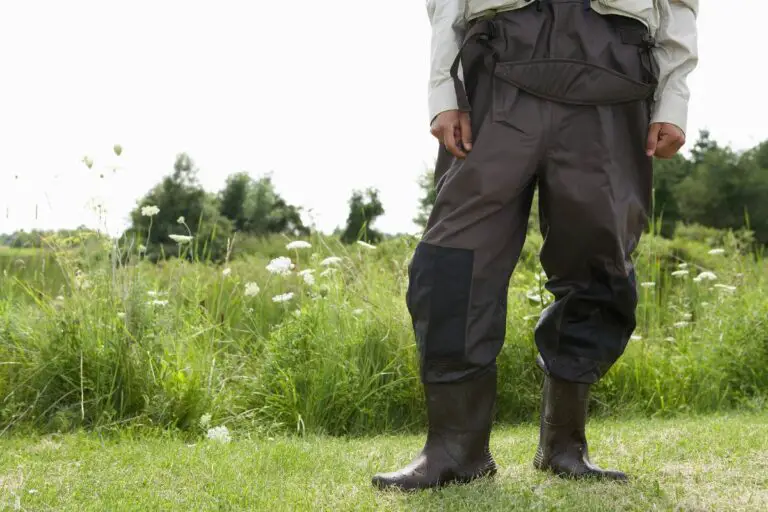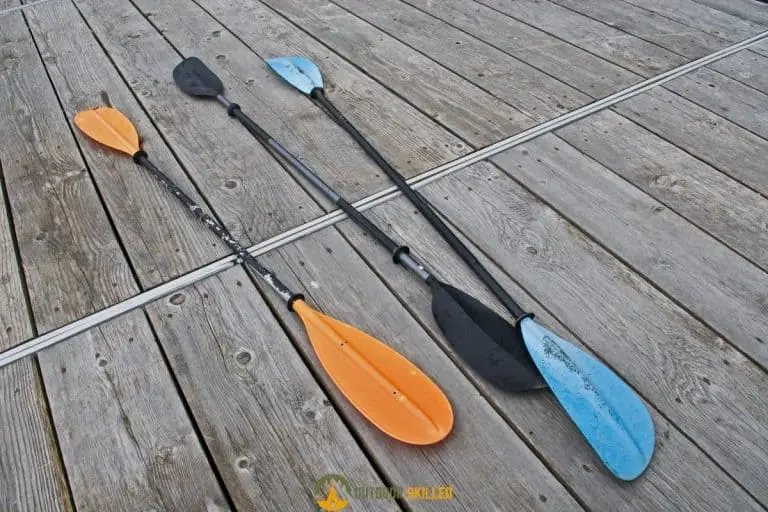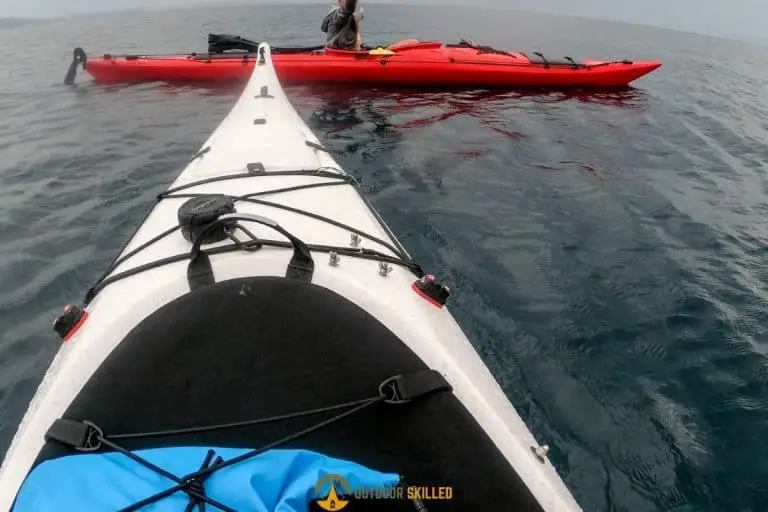A Quick Guide to Kayaking in the Rain With All The Answers
Who says kayaking is only for sunny days? Grab your rain gear and get ready for a wet and wild ride as we explore the world of kayaking in the rain! From the sound of raindrops hitting your kayak to the rush of water down the river, there’s something uniquely exhilarating about paddling through a downpour.
But can you go kayaking in the rain?
You can go kayaking in the rain, but it comes with risks, including reduced visibility, hypothermia, capsizing, and more. To stay safe when kayaking in the rain, you need to take proper precautions, such as always wearing a PFD, avoiding flood-prone areas, and wearing appropriate clothing.
So let’s toss aside those fair-weather paddling notions and embrace the rain – after all, a little water never hurt anybody (well, except for the Wicked Witch of the West). Let’s go make a splash!
Table of Contents
Can You Go Kayaking in the Rain?
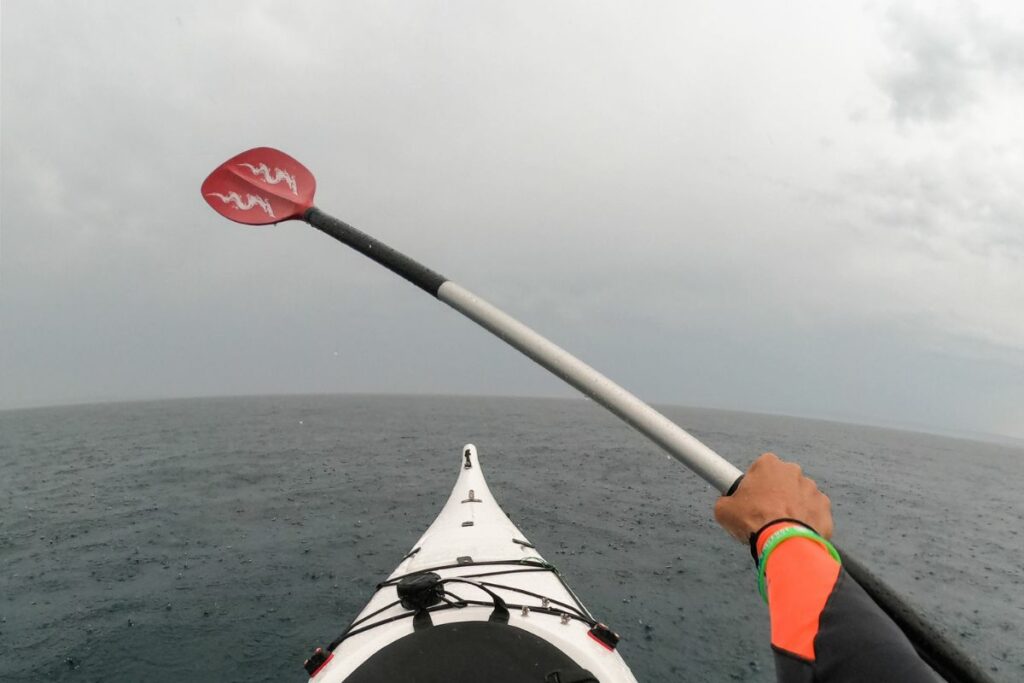
You can go kayaking in the rain. It can be both an exhilarating and serene experience, with raindrops creating a unique sound as they hit the water, but keep in mind that severe weather conditions can significantly impact your kayaking experience and safety.
There are various risks involved when it comes to kayaking in the rain, so it’s not always safe, especially if you do not have enough experience or if proper safety precautions are not taken.
While it’s true that anyone can go kayaking at most times, If you’re a beginner, avoiding kayaking in the rain is best.
Stick to calm waters and perfect your paddling skills in ideal weather conditions.
However, if you have some experience and want to venture out on a rainy day, it’s essential to be aware of the risks involved and take proper precautions to minimize them.
The Risks of Kayaking in the Rain
Here are some potential risks of kayaking in the rain that you should be aware of:
- Reduced visibility: Rain can significantly reduce visibility, making it harder to navigate and increasing the risk of collisions with other boats or obstacles in the water.
- Hypothermia: Rain can lower air and water temperatures, increasing the risk of hypothermia.
- Symptoms of hypothermia include shivering, confusion, loss of coordination, and, eventually, loss of consciousness.
- Increased risk of capsizing: Rain can exacerbate wind and waves, making it more challenging to paddle, steer, and control your kayak, which can increase the risk of capsizing, leading to potential injuries or drowning.
- Slippery surfaces: Rain can make surfaces slippery, increasing the risk of accidents and falls when getting in and out of your kayak or walking on wet surfaces.
- Equipment damage: Rain can damage your kayaking equipment, particularly if it’s not designed for wet conditions. The constant exposure to moisture can cause your gear to rust, corrode, or malfunction.
- Lightning: Thunderstorms often accompany heavy rain, increasing the risk of lightning strikes, which can be deadly if you’re on the water.
How to Go Kayaking in the Rain?
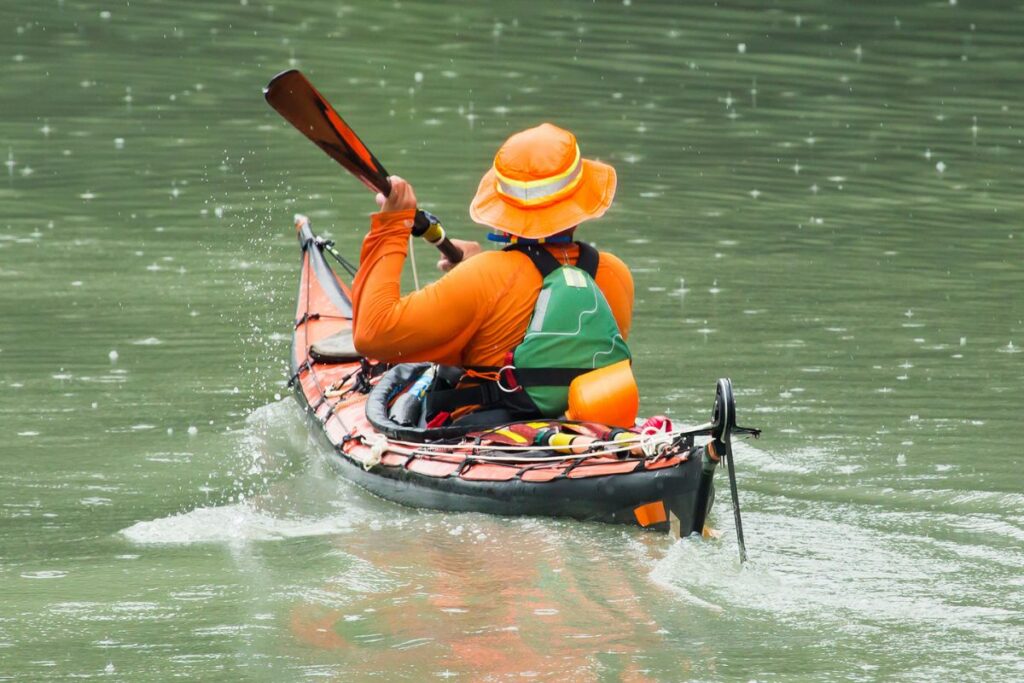
In order to go kayaking in the rain, it’s crucial to take precautions to stay safe. So, here are some useful tips you can follow:
- Always wear a personal flotation device (PFD). It’s essential when kayaking in any weather condition as it can keep you afloat if you capsize and provide insulation in case of cold water immersion.
- Check the weather forecast before heading out, and keep an eye on the weather while on the water. If there is a risk of thunderstorms or lightning, it’s best to avoid kayaking altogether.
- Wear appropriate clothing for the weather to stay warm and dry. Bring extra layers in case of changing weather conditions.
- Bring essential tools, including a map, a compass or a GPS device, a whistle, and a flashlight in case of an emergency. Also, consider storing your essentials in a waterproof bag to keep them dry.
- Familiarize yourself with the area and plan your route before your trip. If you know it’s likely to rain, avoid paddling in flood-prone areas.
- When paddling in the rain, it’s best to avoid standing up in your kayak and stay low in the kayak to maintain a low center of gravity and reduce the risk of capsizing.
- Avoid paddling alone and always paddle with a partner or a group. This way, you can keep an eye on each other and help if someone gets into trouble.
- Let someone know your itinerary and expected return time. This can help search and rescue teams find you in case of an emergency.
By following these tips, you can enjoy kayaking in the rain while staying safe. Remember to use common sense and always prioritize your safety. If the weather conditions become too dangerous, don’t take unnecessary risks and adjust your plans.
What to Wear When Kayaking in the Rain?
Another important factor to consider when kayaking in the rain is wearing appropriate clothing that will keep you warm, dry, and comfortable.
So, here are some tips on what to wear when kayaking in the rain:
- Base layer: Start with a moisture-wicking base layer made of synthetic materials such as polyester or nylon.
- Avoid cotton, as it retains moisture and can leave you feeling cold and wet.
- Mid-layer: Wear a mid-layer made of fleece or wool to help insulate your body and keep you warm. This layer should also be moisture-wicking to prevent sweat from accumulating on your skin.
- Waterproof jacket: Wear a waterproof jacket made of breathable materials that will keep the rain off your body while allowing moisture to escape.
- Look for jackets with adjustable hoods, cuffs, and waistbands to keep water from seeping in.
- Waterproof pants: Wear waterproof pants made of breathable materials to keep your legs dry.
- Look for pants with adjustable cuffs and waistbands to keep water out.
- Footwear: Wear waterproof shoes or boots that will keep your feet dry and warm.
- Avoid cotton socks, as they retain moisture and can lead to blisters.
- Gloves: Wear waterproof gloves to keep your hands warm and dry.
- Look for gloves made of breathable materials that will allow moisture to escape.
- Hat: Wear a waterproof hat with a brim to keep the rain out of your eyes and off your face.
It’s important to dress in layers so you can adjust your clothing to regulate your body temperature. Additionally, make sure your clothing fits properly, and avoid wearing bulky clothing that restricts your movement and makes it difficult to paddle.
How to Keep Water Out When Kayaking in the Rain?
Keeping water out of your kayak when kayaking in the rain can be a challenge, but there are a few things you can do to minimize the amount of water that gets into the kayak:
- Use a spray skirt: A spray skirt is a cover that fits around the cockpit of the kayak and keeps water from splashing into the boat. Make sure the spray skirt fits snugly around your waist and the cockpit rim.
- Check your gear: Make sure all of your gear, such as dry bags and storage compartments, is sealed properly. Use waterproof bags or containers to store your belongings and keep them dry.
- Bail out water regularly: Use a bilge pump or sponge to remove any water that gets into the kayak. It’s best to do this regularly to prevent the accumulation of water in the boat.
- Stay away from rough water: Avoid areas with rough water or high waves, as these can cause water to splash into the kayak.
- Take breaks to empty the kayak: If you’re kayaking for an extended period, empty any water accumulated in the kayak.
It’s important to remember that some water will inevitably get into the kayak when kayaking in the rain, but by following the previous tips, you can minimize the amount of water that gets into the boat and enjoy your kayaking experience in the rain.
Conclusion
Despite the risks involved, many kayakers still enjoy paddling in the rain. However, it’s essential to consider the risks before heading out and take proper precautions to ensure a safe and enjoyable experience.
Kayak your way to Freedom
- On a budget? Check out the best fishing kayaks under $500 here and the best Fishing Kayaks under $1,000 here. Or Check the best Cheap Kayaks here.
- Going fishing? Here are the best Ocean fishing kayaks, and here are the best River Fishing Kayaks.
- You can also find the best Fly Fishing Kayaks here and the best Bass Fishing Boats here.
- A bit experienced? Check out the best modular kayaks here and the best tandem fishing kayaks here.
- Looking for something special? Check out my favorite Ducky kayaks here.
- Navigate your way with these awesome and beginner-friendly Kayak compasses.
- Going Hunting? These Duck hunting kayaks will give you an unfair advantage!
- Have a need for speed? These motorized kayaks will get you moving.
- Protect yourself from the sun with these Kayak shades, and make your kayak more comfortable with these Kayak seats.
- Keep your feet dry and warm with these superb Kayaking shoes.
- Going Kayaking in cold water? Stay warm with these Kayaking gloves.
- Paddle Less, Fish More with the Best Kayak Motors
- Looking to get a trolling motor on your kayak? Check out the best kayak trolling motor mounts here.
If you like this article, please share it or pin it, you can find the share buttons below. We will really appreciate it ❤️

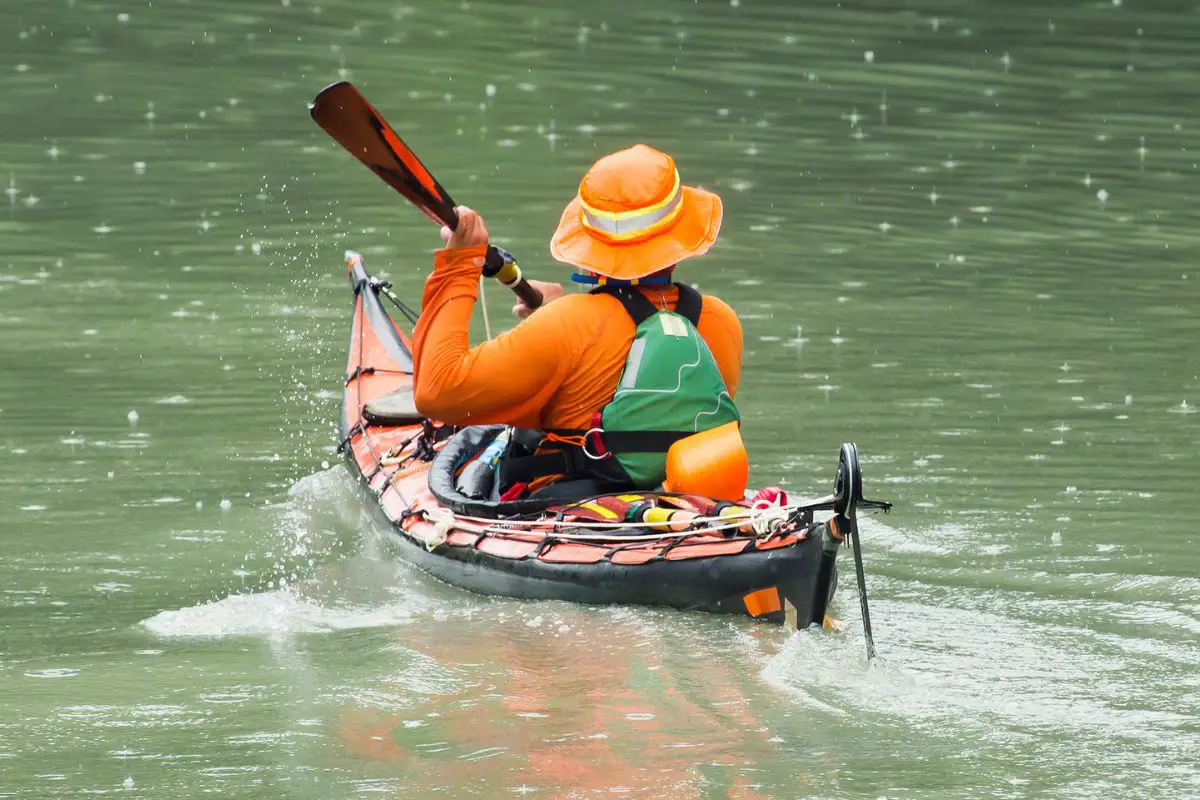
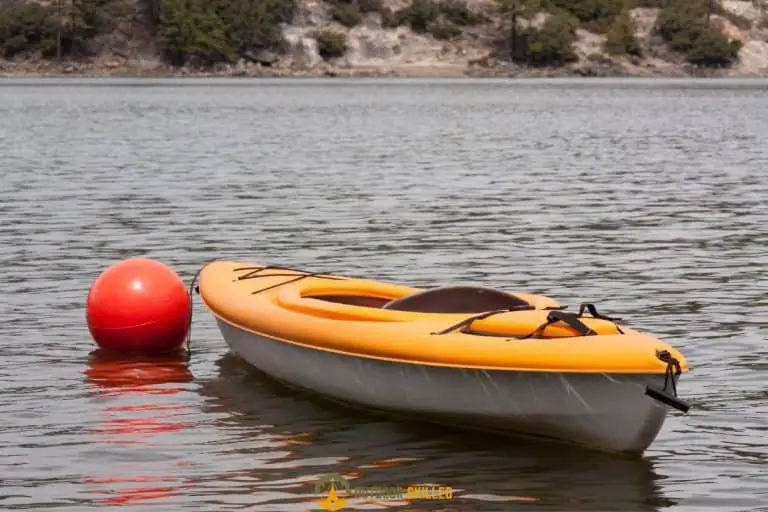
![The 5 Best Motorized Kayaks in 2023 – [for Every Budget]](https://outdoorskilled.com/wp-content/uploads/2021/07/best-motorized-kayaks-featured-768x512.jpg)
